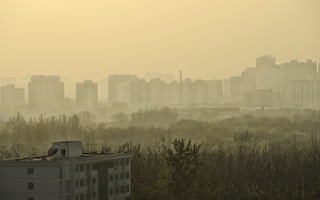The Supreme People’s Court (SPC) has set up a tribunal for environment cases, to enlarge the role of the judiciary in solving environmental conflicts.
The tribunal will hear civil cases involving pollution, exploitation of resources and conservation of the environment such as forests and rivers, said SPC spokesman Sun Jungong on Thursday.
It will also hear appeals from lower courts, supervise environment cases in lower courts and draft judicial explanations, Sun said. The tribunal will set the standards for environment cases, protect people’s environmental rights and fight pollution.
About 134 special environment tribunals have been established at local courts in 16 provincial divisions since the first was founded in southwest China’s Guizhou Province in 2007. All provincial high courts will now set up similar institutions, while city and lower courts can decide based on their own conditions, said Zheng Xuelin, chief judge of the tribunal.
Effective case handling
On Thursday, the SPC released a document on management of environmental resource cases, offering detailed instructions to judges.
“
Environment-wise, much evidence is inaccessible to individuals or civil organizations. Now that courts can collect the evidence themselves, cases will be easier and polluters will be under more pressure
Wang Canfa of the China University of Political Science and Law
Zheng admits it is difficult to file an environment case because of technical problems such as lack of standards to assess damage and local government interference.
Although the Civil Procedure Law allows public interest litigation by “related departments or organisations”, many courts reject such cases on the grounds that no law specifies the definition of “related departments or organizations”.
“Last year we filed eight environment suits. Some courts gave no feedback, some rejected our cases and others didn’t even accept our paperwork,” said Ma Yong, vice director of the environmental legal service center under the All-China Environment Federation.
In one case, benzene in the water supply affected more than 2.4 million people in northwest China’s Lanzhou city earlier this year. When residents jointly filed suit against the water company, the city court rejected the case based on a vague reasoning that “litigants were not in line with legal requirements”.
Environmental public interest litigation is new to China and legal stipulations are scarce or general, so judicial procedures are hard to implement.
Major polluters are often major tax payers, and local governments will pull all kinds of tricks to protect them.
“In the face of all the disheartening difficulties, people become reluctant to turn to the courts for environmental justice,” said Wang Canfa of the China University of Political Science and Law.
SPC figures show the environment taking an alarmingly small proportion of all cases: only about 30,000 out of more than 11 million.
“We are now focusing a smooth channel for government departments and civil organizations to file suit,” Zheng said. “Courts must not turn their back on legally qualified suits.”
Thursday’s document stipulates that courts should exercise their power to obtain evidence in public interests cases if such evidence is absent.
“Environment-wise, much evidence is inaccessible to individuals or civil organizations. Now that courts can collect the evidence themselves, cases will be easier and polluters will be under more pressure,” Wang Canfa said.
The document also expands legal aid for plaintiffs, requiring losing defendants to fully cover the plaintiff’s costs. The SPC also proposes coordinating the work of environmental departments, police, prosecutors and courts. With more effective case management and the new tribunals, Zheng expects the number of cases to increase.
China’s top legislature revised the environmental protection law in April, imposing much harsher punishment on polluters and heavier liability on government. The new law allows public litigation on environmental issues and expands the range of plaintiffs, from parties directly affected by environmental damage to officially registered social organizations that have engaged in public litigation on environmental issues for more than five years.
An increasing number of protests over environmental issues has seen people take to the streets against paraxylene projects, which they believe are a threat to the environment and public health.
Courts are looking for a more rational way for people to express their concerns without chaos and violence.










